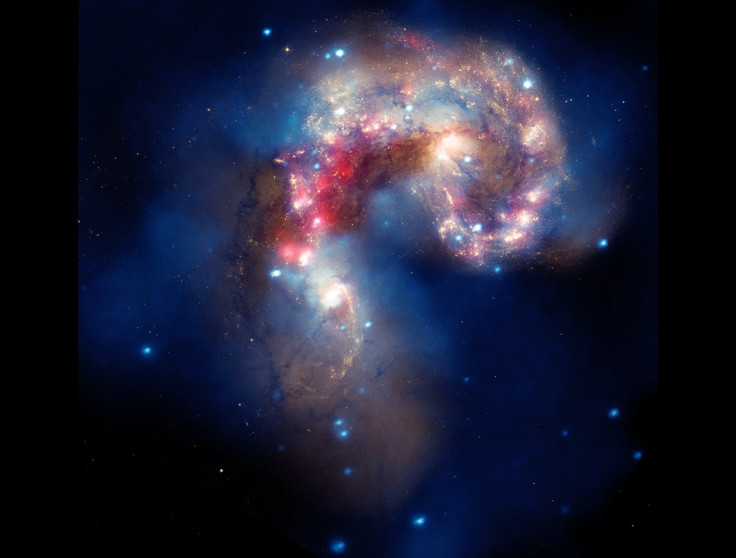Dark Matter Takes Fall In Study Suggesting It Is Made Of Ordinary Quarks

Could dark matter after all be not as extraordinary as made out? Could it be made from ordinary electrons and quarks?
Dark matter, that makes up a large part of the matter in our universe, may not be made of weakly interactive low-mass, exotic particles as believed.
Instead they could be macroscopic objects (macros) as big as an asteroid or a neutron star made from ordinary quarks, say physicists from Case Western Reserve University in a theoretical analysis.
While the search for weakly interacting massive particles has not yielded any positive results, the macros could be assembled out of particles listed in the standard model of particle physics, they say.
The macros may be assembled from ordinary and strange quarks or baryons before they decay, and at a temperature above 3.5 trillion degrees Celsius as in the centre of a massive supernova, they calculate.
The quarks would have to be assembled with 90% efficiency, leaving just 10% to form the normal protons and neutrons found in the universe today.
The team worked out a feasible range of mass for the dark matter between 50 grams and a million billion billion grams.
From exotic to ordinary
In the search for dark matter candidates, physicists have looked at ordinary matter like white dwarfs, neutron stars and black holes but found none.
The searchlight was next turned to semi-exotic stuff such as relatives of neutron stars and large nuclei stars. These were expected to have strange unstable quarks.
Instead, the physicists looked at states of helium with stable neutrons as a better candidate.
"That opens the possibility that stable strange nuclear matter was made in the early universe and dark matter is nothing more than chunks of strange nuclear matter or other bound states of quarks, or of baryons, which are themselves made of quarks," Glenn Starkman from CWRU said. Such dark matter would fit the Standard Model.
Glenn Starkman and David Jacobs, who received his PhD in Physics from CWRU in May and is now a fellow at the University of Cape Town, discuss their theory in a paper at http://arxiv.org/pdf/1410.2236.pdf
According to their theory, dark matter cannot be smaller than 55 grams or they would have been detected in Skylab or mica sheet tracks. Neither can they be above a million billion billion grams as they would bend starlight, something not detected again.
Within the allowed range the reasons they have not been seen so far is because if heavy they would hit the earth once in a billion years only and if small, they do not leave observable record.
At an optimum 1,000 billion to a quintillion range they would hit the earth once a year making their detection near impossible.
Dark matter which has been assumed to be "invisible" due to their weak interactive nature has only been detected from indirect effects of its gravity or the after-effects of their interaction with each other or ordinary matter. Gamma rays are one such signature of the dark matter.
Theory has it that when two dark matter particles collide, they annihilate, releasing energy and ordinary particles that decay into stable particles, including electrons, protons, antiprotons and positrons.
Positrons and antiprotons are rare in the universe and believed to originate from a dark matter source.
Dark matter is believed to make up over 85% of the matter in the universe.
© Copyright IBTimes 2025. All rights reserved.





















